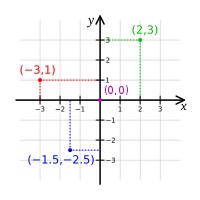
Photo from wikipedia
A three-dimensional transformation optics method, leading to homogeneous materials, applicable to any non-Cartesian coordinate systems or waveguides/objects of arbitrary cross-sections is presented. Both the conductive boundary and internal material of… Click to show full abstract
A three-dimensional transformation optics method, leading to homogeneous materials, applicable to any non-Cartesian coordinate systems or waveguides/objects of arbitrary cross-sections is presented. Both the conductive boundary and internal material of the desired device is determined by the proposed formulation. The method is applicable to a wide range of waveguide, radiation, and cloaking problems, and is demonstrated for circular waveguide couplers and an external cloak. An advantage of the present method is that the material properties are simplified by appropriately selecting the conductive boundaries. For instance, a right-angle circular waveguide bend is presented which uses only one homogenous material. Also, transformation of conductive materials and boundaries are studied. The conditions in which the transformed boundaries remain conductive are discussed. In addition, it is demonstrated that negative infinite conductivity can be replaced with positive conductivity, without affecting the field outside the conductive boundary. It is also observed that a negative finite conductivity can be replaced with a positive one, by accepting some small errors. The general mathematical procedure and formulation for calculating the parametric surface equations of the conductive peripheries are presented.
Journal Title: Optics express
Year Published: 2018
Link to full text (if available)
Share on Social Media: Sign Up to like & get
recommendations!